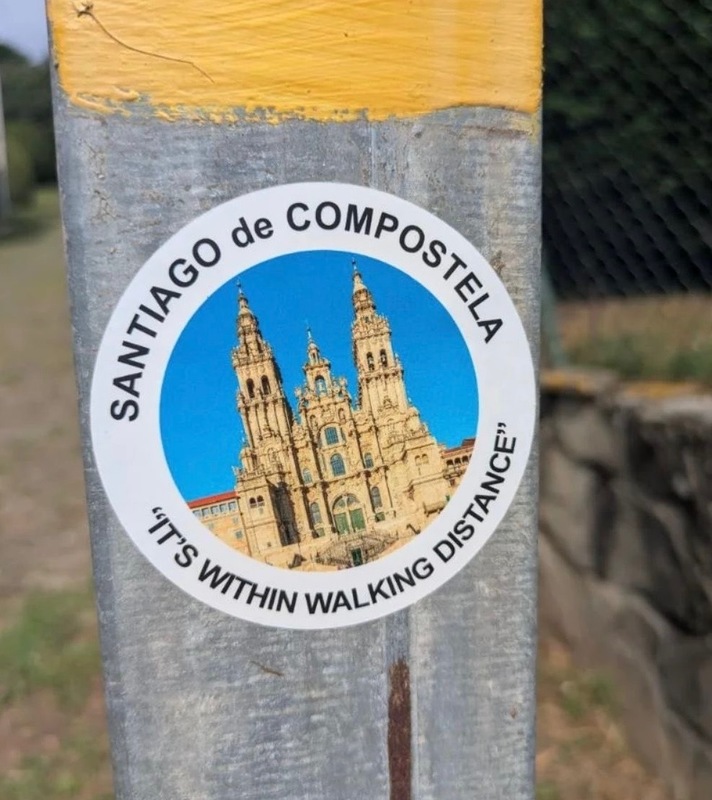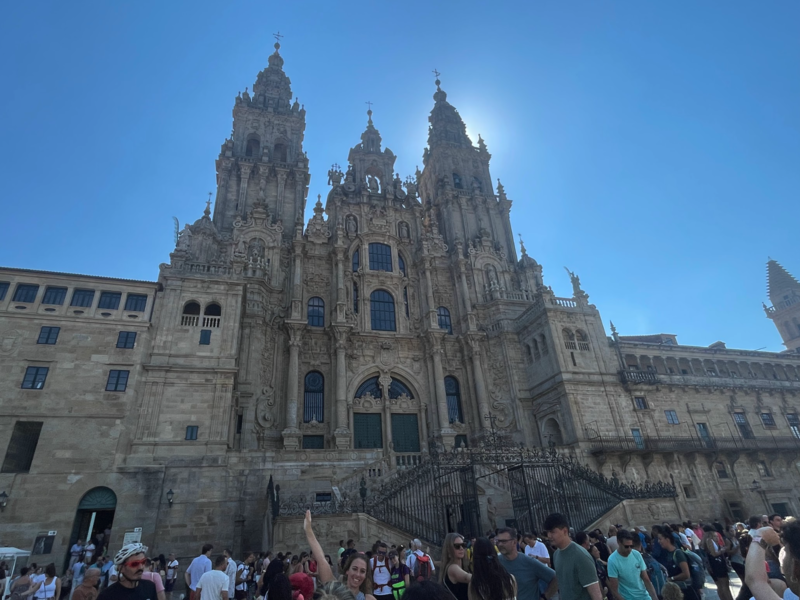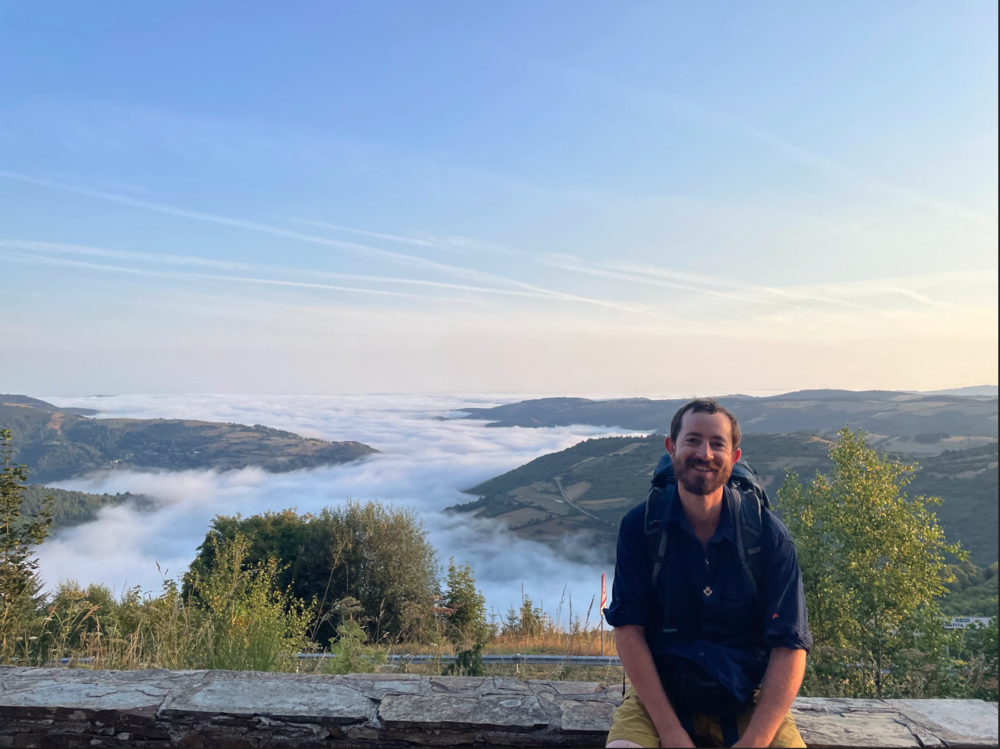Ninth grade Global History teacher Ean Ward took a teacher-inspired 500 mile walk through Spain and France this past summer called the Camino de Santiago.
Mr. Ward (pictured in header of this post) was kind enough to share his experience and photos with the school community.
What is the Camino de Santiago?
It’s a 500 pilgrimage mile walk from the border of France and across northern Spain that ends in a city called Santiago de Compostela, Spain.
A pilgrimage is a journey, usually (but not always) on foot, along a path to a meaningful place for spiritual or personal reasons, adventure or sight-seeing.
The history of the trail begins in the early 9th century (814 AD) when people would call it walking “the Way of St. James.” Walkers are commonly known as “pilgrims” and pass through many beautiful regions - dry landscapes, cities, farmland and lush countryside too. It’s beautiful and challenging.
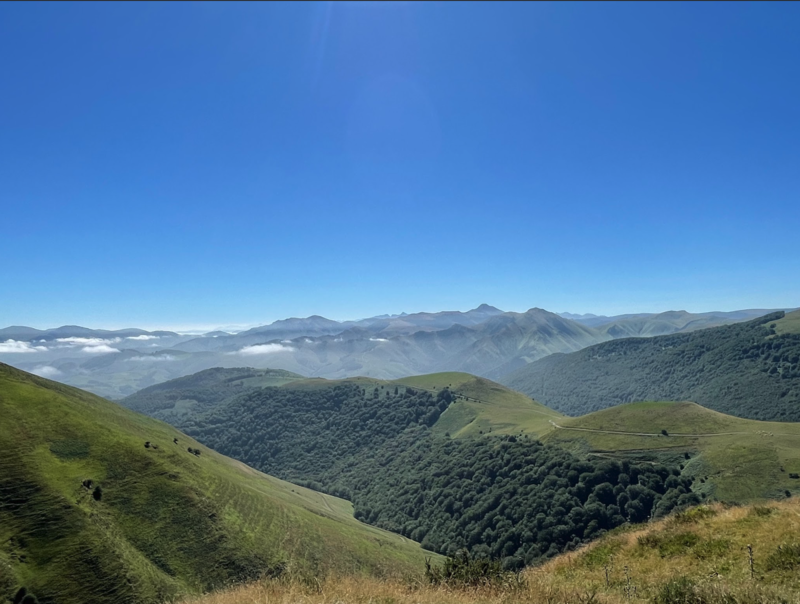
What made you want to walk the Camino de Santiago?
When I was in high-school in Hartford, NY, my Spanish teacher, Mrs. Barnard shared her own experience of walking a section of the Camino de Santiago.
Hearing about this amazing, ancient walking route through Europe that for over 1,200 years people have walked sounded like a great adventure to me, and I remember thinking, one day, I would like to travel and do that too.
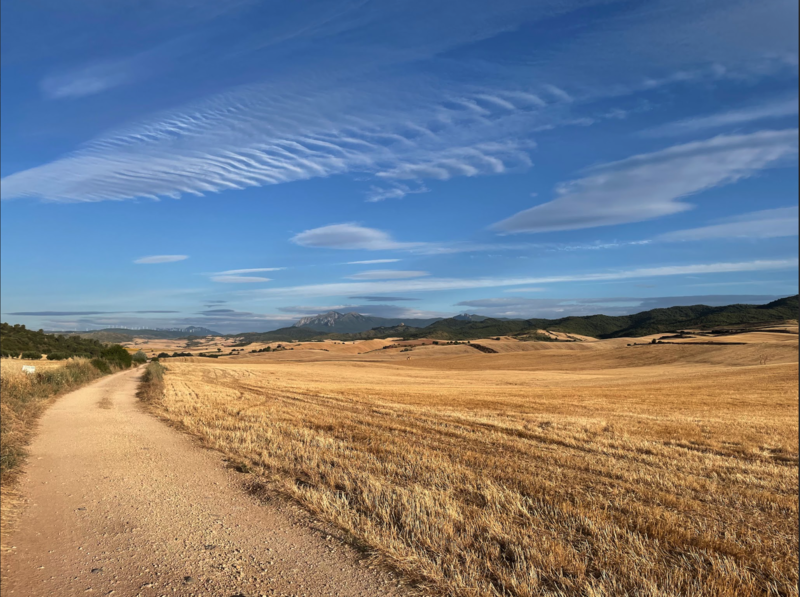
What was a typical day during your pilgrimage?
Most people take this in stages, over a period of months or years, coming back to do another stretch. I finished the walk in about 23 days, so I walked pretty fast on most days, covering about 21 miles per day.
I’d typically start before sunrise and I would pack something to eat on my walk for breakfast and I would continue until lunch time. Since the path goes through a variety of towns it was easy to find a place to have a meal each day.
During the real heat of the day, around 3 pm or 4pm - I would stop and find a pilgrims hotel or hostel, a local, inexpensive lodging that specializes in caring for pilgrims. I would ask the proprietors what was there to see in their town and spend a little time exploring and sight-seeing.
Then I would have dinner nearby or at the pilgrim hotel where I could meet fellow walkers and learn about their lives and why they were walking the trail. It was really interesting.
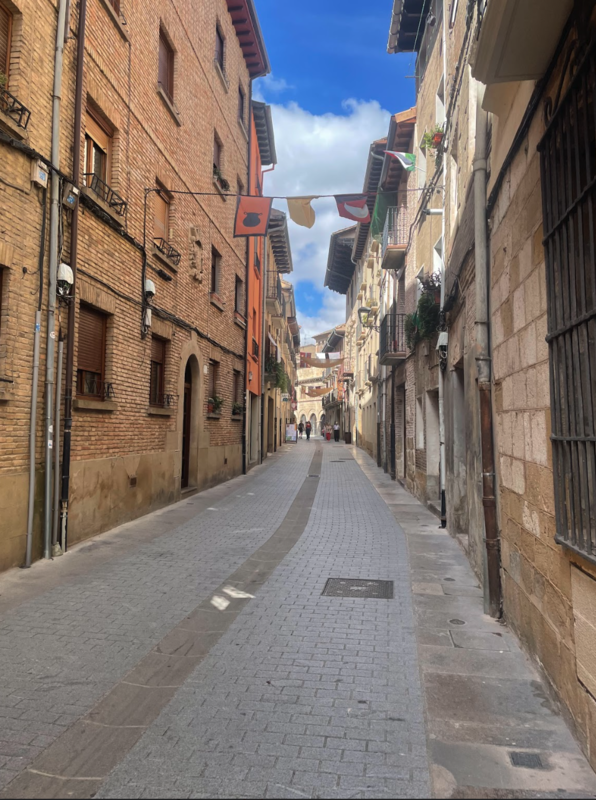
What was a favorite memory you can share?
On the second day of the Camino, I was so full of doubt and also very, very hot. I knew I had over 400 miles ahead of me, and I was starting to really second guess myself.
Later that day, I arrived at a local hostel where I met the owners, an Italian man and Spanish (specifically from the Basque region, she emphasized!) woman, who were creating a communal meal for the people staying at their place. They were so warm and welcoming and I was introduced to nice people from Quebec, Canada, Taiwan, and Poland who were also doing the same pilgrimage as myself.
Here I was, someone who grew up as a regular small-town kid from Hartford, NY making new friends and speaking with whoever could understand me and whomever I could understand. We were all trying to talk with each other and share a meal. It was a really nice moment and a cool experience of feeling connected to a bigger part of the world, which for me, was really memorable.
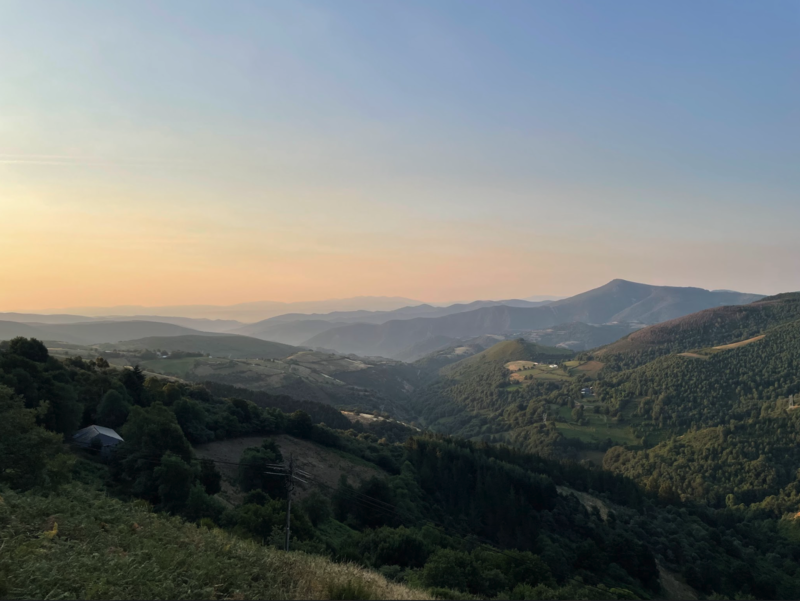
How did you get through the hard parts of the walk?
Well, I kept thinking to myself about how “future me was going to feel really great about achieving this, and I am not going to let today’s me who is hot, tired and achy stop me.”
I guess you could say that is a kind of purposeful self-talk and practicing delaying gratification but that’s what worked for me: I had to keep talking to myself and thinking in a very deliberate way about what I wanted to experience instead of letting how I felt in that moment determine if I was going to accomplish my goal.
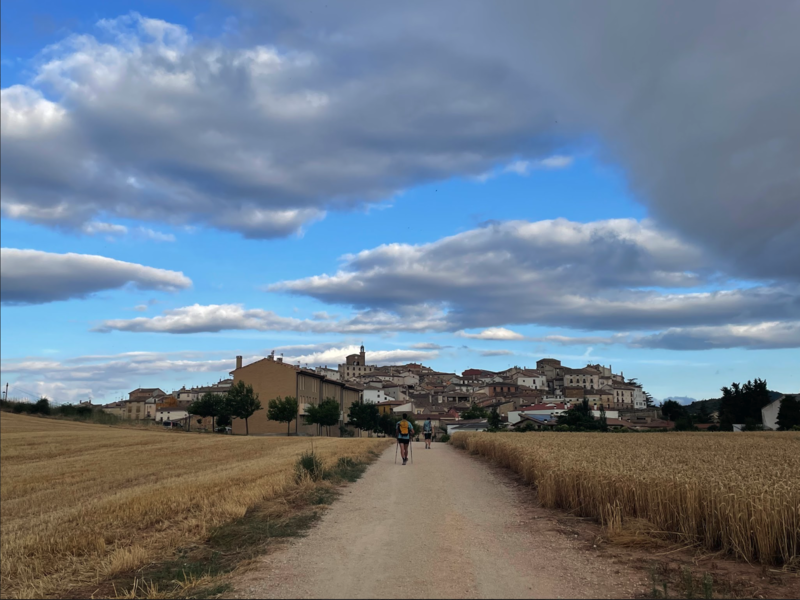
How did you get there?
I took a plane and flew into Amsterdam, Netherlands. I stayed with a friend I made in college for a few days and then took a high-speed train to southern France to begin. France is the size of Texas and I crossed it in about 6-7 hours at 180 miles an hour with this high-speed train.
Once in France, I reviewed all my supplies for my backpack and then took another train to where the trail begins.
It’s so simple to do this, and you can do it alone, just like I did. You don’t need to reserve a train ticket or hotel ahead of time. Western Europe is set up for people to travel on their own with the Europass (a flexible, affordable multi-country train pass), affordable hostels, and it’s easy to meet others.
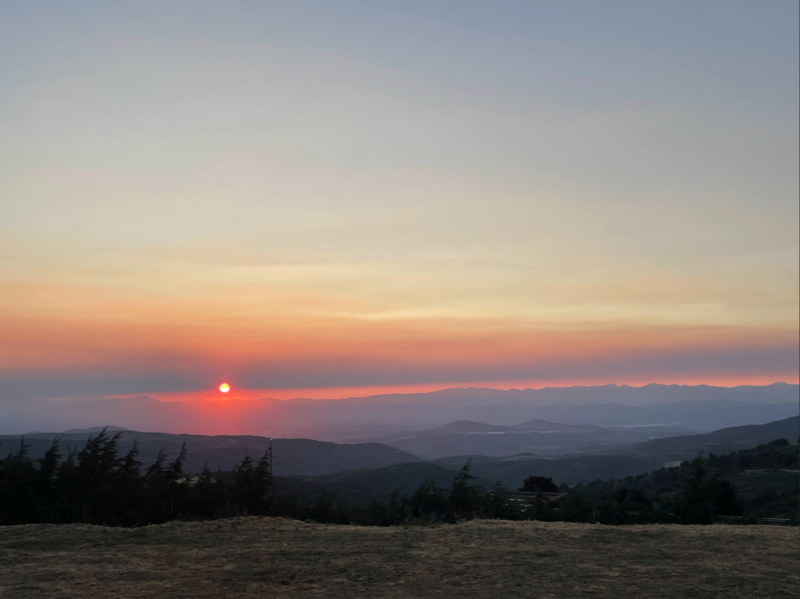
What advice do you have for someone considering walking the Camino?
First, trust that it's possible and second, it’s a process. There are phases of doubt, painful moments (blisters!), easy and fun moments. Expect it all. And it’s possible, because, like I mentioned, I’m just like the students from Granville. I grew up in Hartford, and I did it and so can others.
There is also a lot of mystical and spiritual hype to walking the Camino. Yes, there are some moments like that, but mostly, it’s completing the ENTIRE length that creates the experience and time for reflection, something we don’t always have in our everyday life.
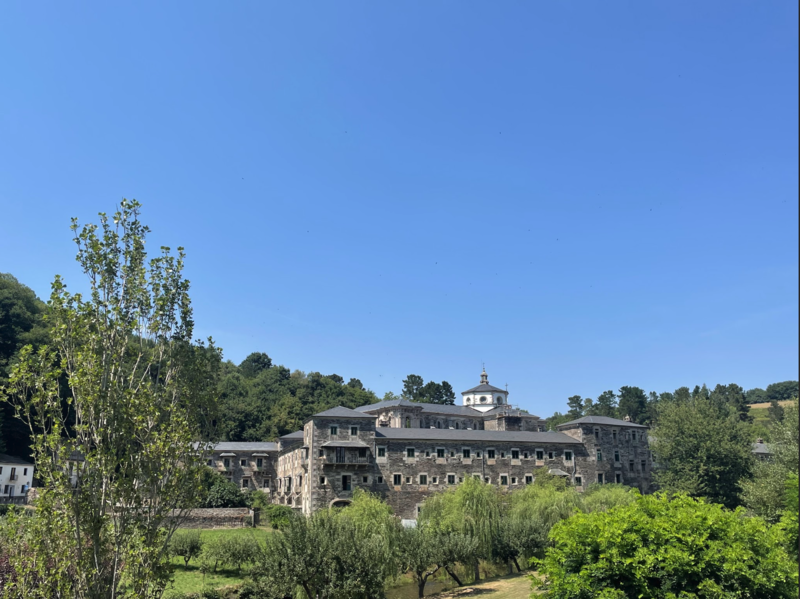
How do you think this journey will impact your teaching?
On one hand, walking the Camino is like living history! On the other hand, there were a lot of moments that taught me to have endurance - physical, mental and emotional. I kept telling myself, if I can do this then I can certainly show up for my students for 180 days of classes, with kindness and patience in my heart, no matter how challenging the day is.
I also think back to how a teacher in my own high school shared their story and I hope to be someone like that for my students as well and inspire them to try new things and come back to their town and share what they learn.
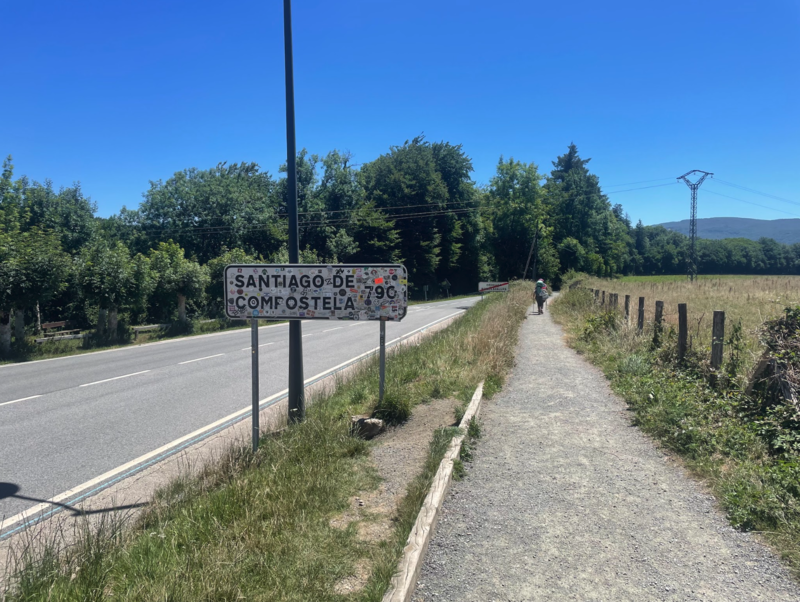
RESOURCES
Here is the link to the Camino de Santiago Overview from PBS’s Rick Steves
Here is the link to the American Pilgrims website. This connects you to the American Pilgrims on The Camino, the official American association of pilgrims (many countries have their own "association"). They provide informational resources geared towards Americans to help plan the journey.
Fun Fact: Mr. Ward was nominated as Teacher of the Month from the Jr/Sr High Student Council for October 2025.
